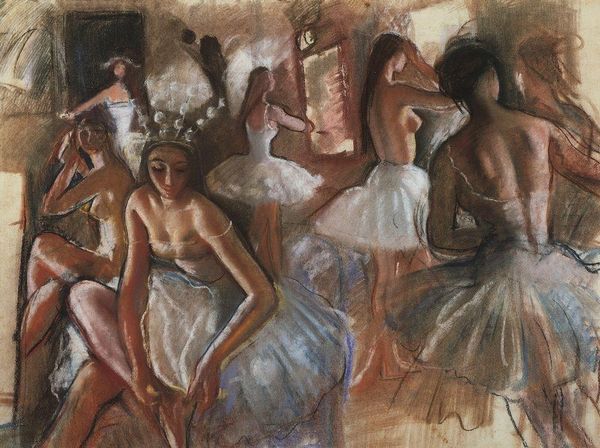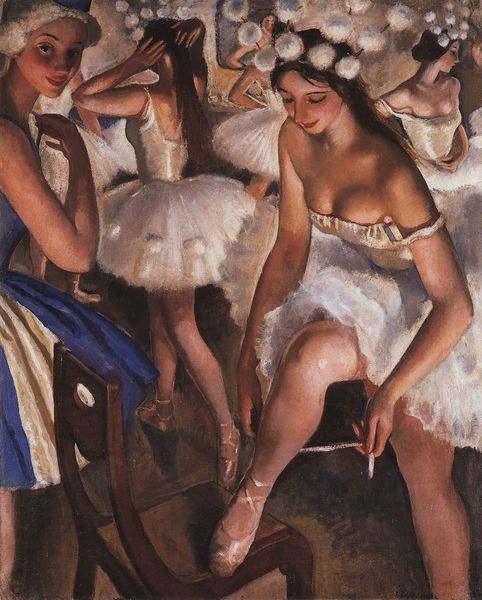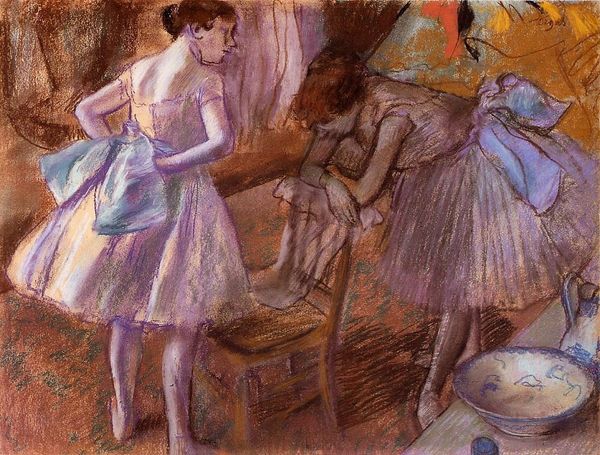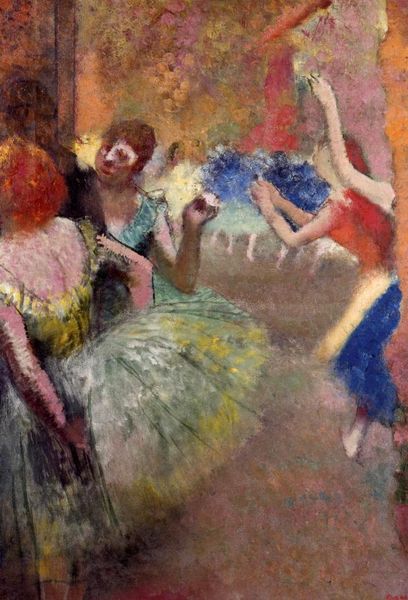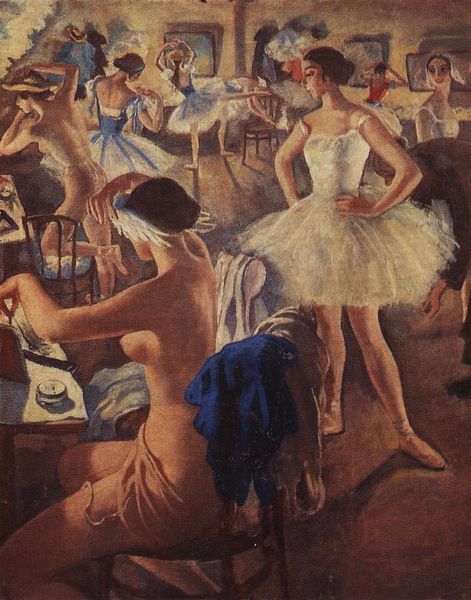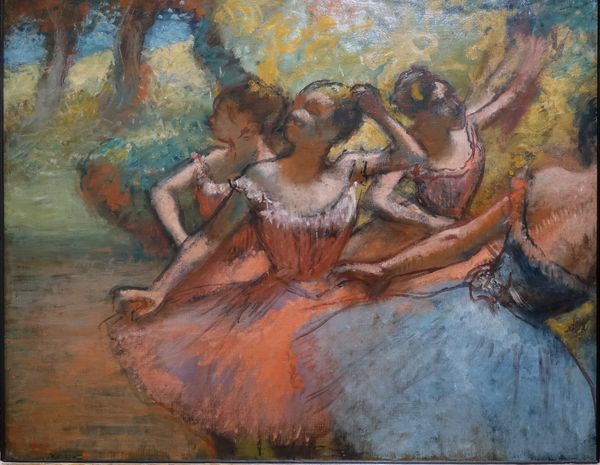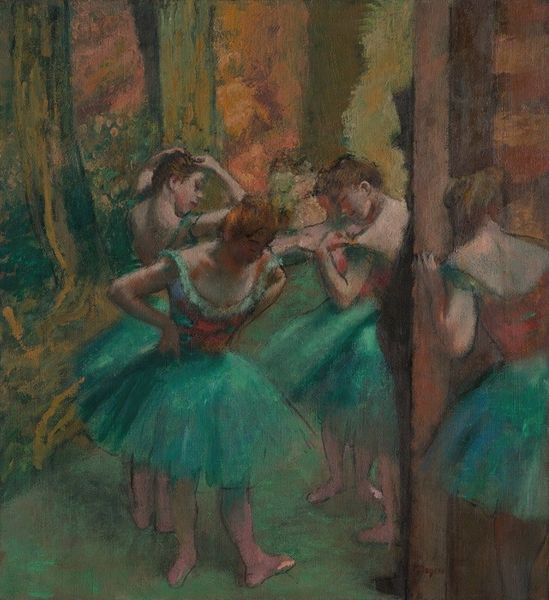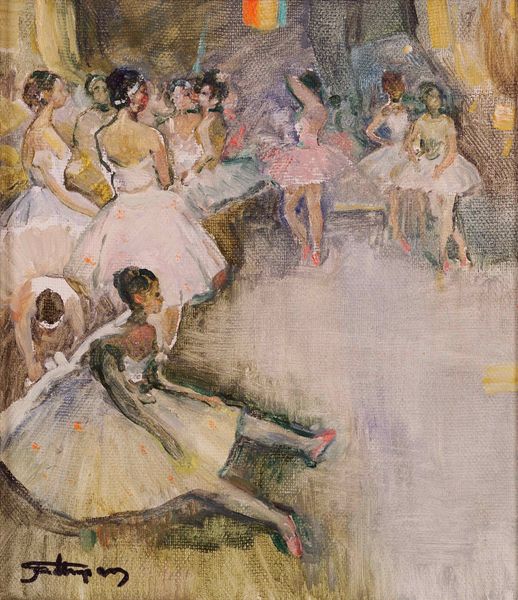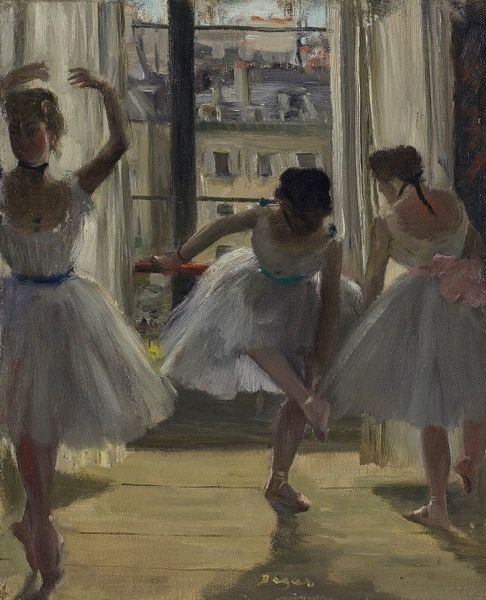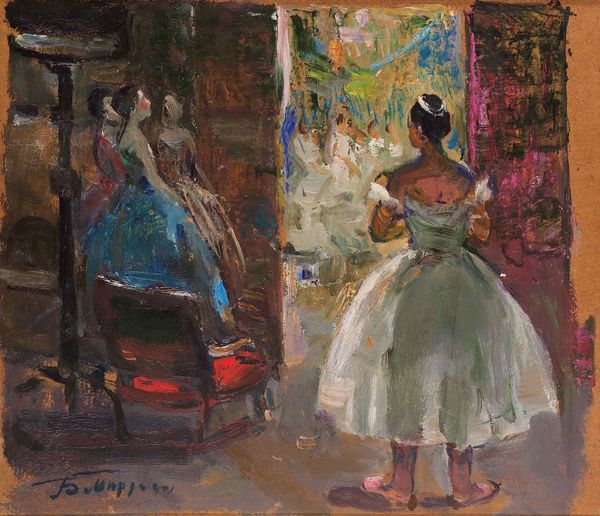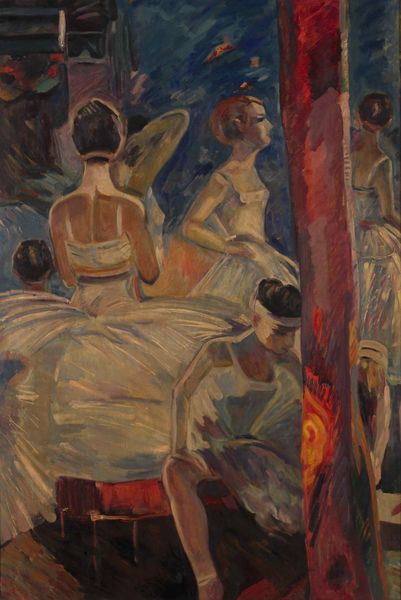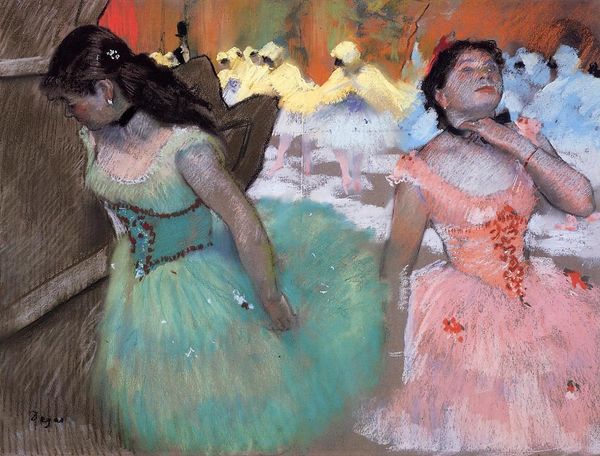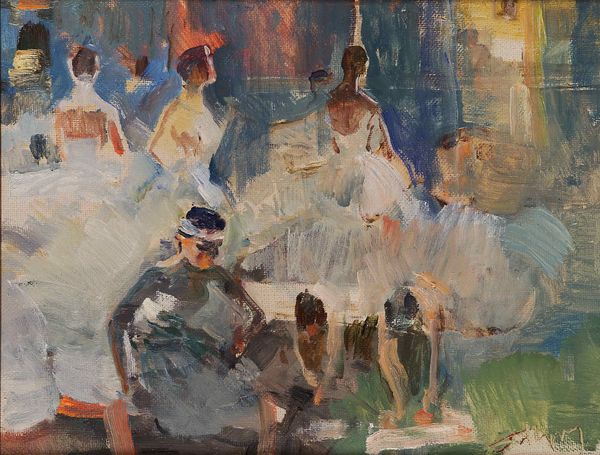
Copyright: Zinaida Serebriakova,Fair Use
Editor: So, this is "Girls Sylphides (Ballet Chopiniana)" by Zinaida Serebriakova, painted in 1924 using gouache and oil. I’m really drawn to how she captures a sort of behind-the-scenes glimpse into the dancers preparing. What catches your eye about it? Art Historian: The way Serebriakova positions these dancers in a state of preparation is very telling. These aren't idealized ballerinas on stage; instead, we are witnessing the labor, the anticipation, and even the vulnerabilities involved in creating that illusion. Given the socio-political context of 1920s Russia, with the rise of socialist realism, do you find this a subversive act of depicting women? Editor: Subversive, how so? I mean, they’re just getting ready for ballet. Art Historian: Well, ballet was often seen as bourgeois entertainment, right? By focusing on the backstage reality, she's subtly commenting on the manufactured nature of performance and perhaps, by extension, societal expectations of women and the sacrifices inherent within. Notice also her free use of brushwork. What might that signify? Editor: I see what you mean. The loose brushwork feels less about idealizing beauty and more about capturing a fleeting moment in the dancers' lives. It’s a raw perspective, definitely. Art Historian: Precisely. She’s offering a perspective outside of the male gaze of Russian Academic painting, showing the agency of these young women, almost inviting us to be complicit observers of their personal prepartions.. It begs the question: Is this empowering, exploitative, or perhaps a delicate blend of both? Editor: I guess I never considered it that way before. Thinking about it within that historical context adds so much more meaning to the painting! Art Historian: It’s all about asking the right questions, isn’t it? Art history should be alive, constantly in conversation with our contemporary understanding of power, identity, and representation. Editor: Definitely! I'm going to remember to look deeper, beyond the surface and think about the artist's perspective in their time. Thanks so much for pointing that out.
Comments
No comments
Be the first to comment and join the conversation on the ultimate creative platform.
